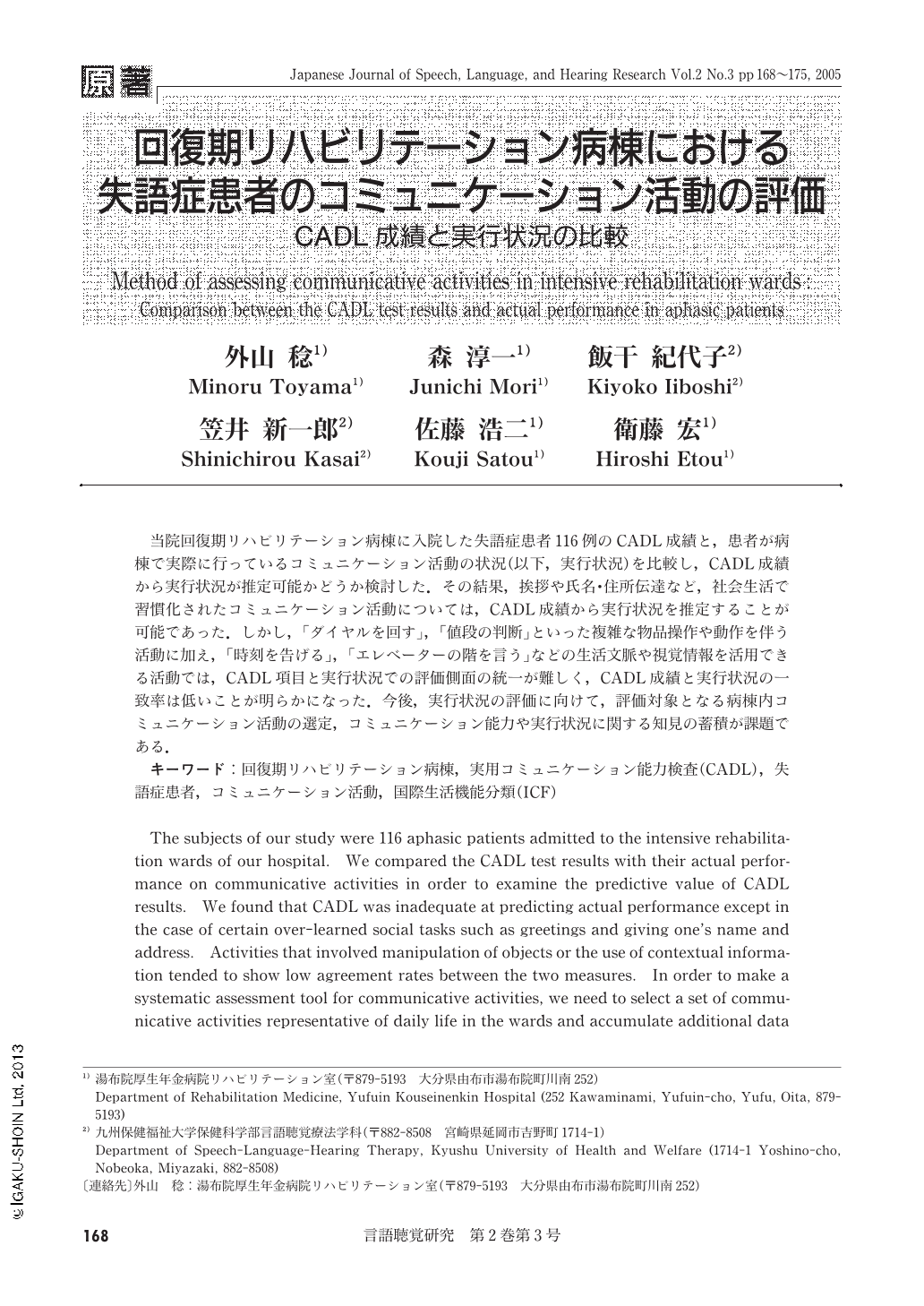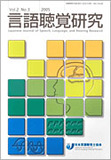Japanese
English
- 有料閲覧
- Abstract 文献概要
- 1ページ目 Look Inside
- 参考文献 Reference
- サイト内被引用 Cited by
当院回復期リハビリテーション病棟に入院した失語症患者116例のCADL成績と,患者が病棟で実際に行っているコミュニケーション活動の状況(以下,実行状況)を比較し,CADL成績から実行状況が推定可能かどうか検討した.その結果,挨拶や氏名・住所伝達など,社会生活で習慣化されたコミュニケーション活動については,CADL成績から実行状況を推定することが可能であった.しかし,「ダイヤルを回す」,「値段の判断」といった複雑な物品操作や動作を伴う活動に加え,「時刻を告げる」,「エレベーターの階を言う」などの生活文脈や視覚情報を活用できる活動では,CADL項目と実行状況での評価側面の統一が難しく,CADL成績と実行状況の一致率は低いことが明らかになった.今後,実行状況の評価に向けて,評価対象となる病棟内コミュニケーション活動の選定,コミュニケーション能力や実行状況に関する知見の蓄積が課題である.
The subjects of our study were 116 aphasic patients admitted to the intensive rehabilitation wards of our hospital. We compared the CADL test results with their actual performance on communicative activities in order to examine the predictive value of CADL results. We found that CADL was inadequate at predicting actual performance except in the case of certain over-learned social tasks such as greetings and giving one's name and address. Activities that involved manipulation of objects or the use of contextual information tended to show low agreement rates between the two measures. In order to make a systematic assessment tool for communicative activities, we need to select a set of communicative activities representative of daily life in the wards and accumulate additional data on communicative activities and communication abilities of our patients.

Copyright © 2005, Japanese Association of Speech-Language-Hearing Therapists. All rights reserved.


